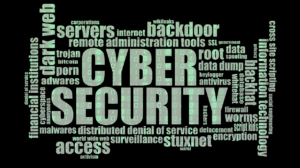Nowadays, many digital marketers put a lot of emphasis on Instagram influencers, chat bots, and other innovative opportunities to reach their target audience. However, all these modern and trending communication methods shouldn’t distract you from one of the oldest yet most useful messaging channels — the good old email.
But with online channels like social media platforms on the rise, you might ask: Is email marketing still effective?
To make it simple, yes it is. In fact, 78% of marketers saw an increase in email engagement over the last year. Many consumers still prefer connecting with their favorite brands via email and it won’t slow down anytime soon. In other words, email marketing is continually evolving without abandoning its core purpose, which is to reach out to customers in an engaging and personal way.
If you want to leverage email marketing, here are a few strategies you can use to optimize your email open rates and boost engagement.
Personalize your email
In email marketing, personalization is the act of targeting an email campaign to specific subscribers by leveraging information and data that you have about them. It could be information such as their first name, where they live, the last product they bought, and other data points.
Basic email personalization tactics include using the subscriber’s name in the subject line, while more advanced techniques include changing the email’s content based on the subscriber’s gender, location, and purchasing habits.
Personalizing your emails is a proven effective method of increasing your open and click-through rates. Studies show that emails with personalized subject lines are 26% more likely to be opened than generic ones. This is because by talking directly to the customer, you immediately establish them as a person — not just a nameless consumer.
Create striking subject lines
Subscribers often judge emails by the subject lines, so make yours count. Your email’s subject line will get cut off when it’s too long, especially when viewed on a mobile screen, so try to keep it between 40 to 50 characters. That way, it can be read in its entirety regardless of the device used.
Your subject lines should be striking enough to encourage recipients to open your email. Here are a few tips to make them attention-grabbing:
- Ask them a question – this allows you to engage with your audience on a more personal level
- Pique their curiosity – give recipients some clues about the content of the email without giving away too many details
- Be straightforward – if the campaign is an announcement or requires you to be straight to the point, then make it as succinct as possible.
- Be humorous – you can use puns or play around with words to amuse your subscribers.
Additionally, avoid using terms like, “Free,” “Cash,” “Save,” “Only $,” along with taboo or adult-oriented terms such as “drugs.” These will be read as spam by email service providers. For your reference, Hubspot has a comprehensive list of words you should never use in your subject lines.
Schedule your emails
When’s the perfect time to send emails? Basically, it’s the time that works for your target audience.
It might be a cop-out answer but it’s true. For instance, if you’re targeting the young, tech-obsessed crowd, any time of the day can work just fine. If you’re in the entertainment industry, Thursday or Friday is a great choice with folks looking for fun things to do over the weekend. The general consensus is that Tuesdays and Thursdays are the best days to send out emails, but your competitors probably know this too. That means you’ll be facing intense competition if you send out emails on recommended days and times.
So, if you don’t want your newsletters lost in the hustle, it’s really about knowing your audience and their habits. And if you really want to rock digital marketing and send out newsletters at the best time for optimal open rates, you need to test!
Yes, A/B test your send times. It’s really the most effective way to find the perfect send time for your specific audience.
Segment your list
People want to see emails that are relevant to them. When you segment your list, you basically filter your contacts based on specific conditions and information, so that the people on each list will receive newsletters about topics that they actually care about.
Segmenting can be done in various ways. You can group recipients by age, location, purchasing behavior, interests, and more. Once you’ve segmented your email list, you’ll be able to speak more directly and intelligently with your customers and provide them with the information they want at the most opportune time. And when you do segmenting right, the payoff is huge. When Mailchimp users segmented email lists based on information such as job title and location, click-through rates rose by 22% and open rates increased by 19%.
Constantly update your list
You may have subscribers who won’t engage with your emails and remain that way for months. Some of them might have switched to another email address or completely lost interest in your brand. Whatever the reason, don’t forget to remove inactive subscribers and clean up your lists. Doing so minimizes the bounce rate of your email marketing campaigns and you end up targeting active recipients who will actually engage with your content.
Don’t forget about visuals
A newsletter’s design needs to complement the copy so that you can effectively convey your message and delight your subscribers. While you don’t have to be the next Van Gogh to create a stunning design, you do need to weigh over your email’s layout, color scheme, and the graphics you include.
To craft a visually attractive and engaging email, go for a clean, intuitive layout that highlights your call-to-action (CTA). Make sure it looks great on screen sizes and devices, and refrain from using too many images or videos.
Test to See What Works!
The best thing about email marketing is that you can continually learn from your past sends and improve on your next one, allowing you to regularly refine your process until you achieve peak results. And it doesn’t have to be a complicated process! Simply pay close attention to your campaign’s composition and timing, match it with each of your segment’s nuances, and you’ll see an increase in open rates.
Remember, engagement is crucial to see the results you want from email marketing. Without engagement, it doesn’t matter how awesome your copy is or how big your list is. If you want your email campaign to be effective in bringing in leads and conversions, your audience must open and interact with your emails.
And with the tactics above, you’re ready to see your best engagement ever.





